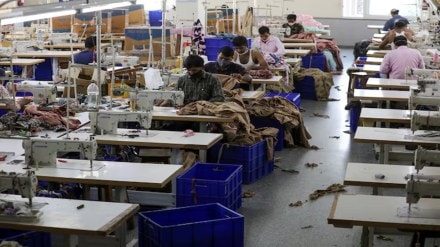By Nagesh Kumar
Over the past decade, the Union government has taken several steps to foster the manufacturing sector, which helps to create decent jobs, including through Make in India, the production-linked incentive (PLI) scheme, and reforms enhancing the ease of doing business, among others. Carrying forward the policy momentum, the Union Budget for 2025-26 has devoted considerable attention to the manufacturing sector, including through schemes for the micro, small, and medium enterprises MSMEs and labour-intensive sectors.
Among the significant steps is the focus product scheme for India’s footwear and leather sector covering support for design capacity, component manufacturing, and machinery required for the production of non-leather quality footwear, which may create as many as 2.2 million jobs. It also includes a National Action Plan for Toys that will focus on cluster development, skills, and the manufacturing ecosystem for making high-quality, innovative toys for the local as well as global markets.
Food processing is another sector that is receiving attention. One of the largest producers of cereals, fruits, vegetables, dairy and crustaceans, India is not able to tap the sector’s potential for jobs and income creation due to very low levels of processing. This year’s Budget proposes the establishment of a new National Institute of Food Technology, Entrepreneurship and Management, and launched a programme to promote processing of fruits and vegetables, as well as a Makhana Board to enhance value-addition.
The Budget has doubled the investment and turnover criteria for defining MSMEs and enhanced the credit guarantee cover from Rs 5 crore to Rs 10 crore (Rs 20 crore for exporting firms). But an important initiative is to provide a credit card with a `5 lakh limit to micro-enterprises for addressing their day-to-day credit requirements, reducing their dependence on informal lenders and microfinance companies. A new Fund of Funds with fresh contribution of Rs 10,000 crore for start-ups is also an important intervention.
A more strategic intervention announced in Budget 2025, however, is the National Manufacturing Mission supporting MSMEs as well as larger enterprises through policy, execution road maps, and governance and monitoring framework for ministries and states. It will also support cleantech manufacturing through higher value addition and building an ecosystem for green industries — solar photovoltaic cells, electric vehicle batteries, electrolysers, wind turbines, among others. A National Manufacturing Mission could fill an important policy gap in the country. Although India has been trying to harness the potential of manufacturing for economic growth and job creation through several programmes and policy measures such as PLI, a broad framework has been lacking. In the early post-Independence period, the Industrial Policy Resolution of 1957 provided such a framework, including the public sector providing the “commanding heights”. Later, the Industrial Policy Resolution of 1991 guided liberalisation to foster global economic integration of the economy. However, the context for industrialisation has changed dramatically since then both externally as well as internally.
Externally, the era of hyper-globalisation when world trade and investment were growing at an average annual rate of around 20% has turned into “slowbalisation” since the global financial crisis of 2008-09, with both trade and global investments growing at very subdued rates, if at all. The erstwhile champions of free markets, such as the US, have turned protectionist, focusing on onshoring of manufacturing value chains with subsidies, investment incentives, and a heavy dose of tariffs. Another change is the serious threat of dumping from across the border with the dominant manufacturing nation of the world sitting on a huge underutilised capacity and with deep pockets. Finally, the rise of new technologies like artificial intelligence and the global decarbonisation commitments add to the complications.
Within the country, a clutch of young, first-generation entrepreneurs are testing their mettle in both the national and global markets, joining India’s growing list of unicorns in the country’s vibrant start-up ecosystem. On the other hand, some well-established players in traditional industries of the country are outsourcing production of even the lowest technology, labour-intensive products such as garments, artificial flowers, glassware, crockery, plastic ware, furniture, decorative items, among other household goods, to sell under Indian brand names. As a result, they are destroying millions of jobs, especially in the MSME sector.
Therefore, the India Industrial Development Report 2024-25 prepared, by the Institute for Studies in Industrial Development (ISID), makes a case for a new industrial policy to provide a framework for accelerated industrialisation of the country in the changed context. This would pave the way for realising India’s goal of becoming a developed country by generating jobs and prosperity in an inclusive, sustainable, and balanced manner without losing sight of competitiveness. Besides setting guiding targets to harness India’s manufacturing potential, the new policy should articulate some broad principles on primacy of localisation of jobs and value addition, entrepreneurship, and locally-anchored technological capabilities. It should also provide for a high-powered institutional framework for a coordinated implementation in a dynamic setting.
Hopefully, the National Manufacturing Mission will be elaborated to fill this important policy gap to steer the country’s development trajectory to harness its manufacturing potential in traditional as well as sunrise sectors, providing decent job opportunities for India’s teeming millions and powering its march to the status of a developed country.
The writer is Director, ISID, and an external member of the RBI’s Monetary Policy Committee.
Disclaimer: Views expressed are personal and do not reflect the official position or policy of FinancialExpress.com. Reproducing this content without permission is prohibited.
